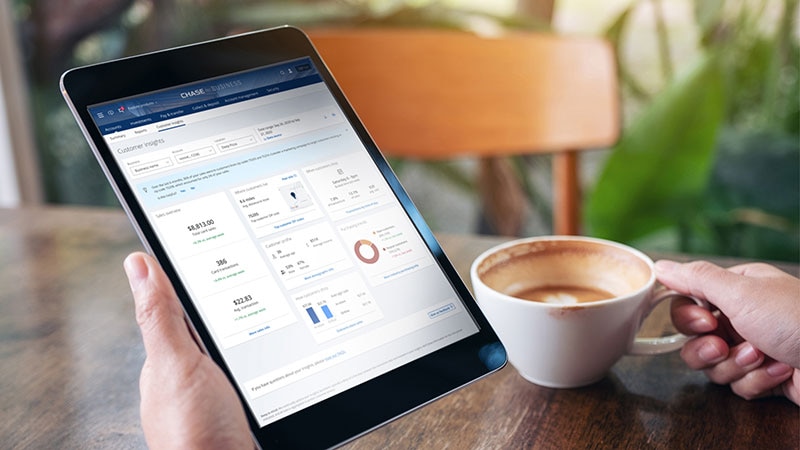Email marketing management: Tips and best practices
Learn how to effectively manage email marketing campaigns to boost engagement. Presented by Chase for Business.

We all get marketing emails in our inboxes every day. They can be one of the most effective ways for businesses to connect with us and create lasting brand relationships. But what does it take to be on the sending end? If you’re a business owner looking to set up and manage your own email marketing strategy, there can be a lot to consider.
What is email marketing?
Email marketing is a digital communication strategy that gives business owners a direct line of communication with their customers. From newsletters and promotional offers to product updates and event invitations, email marketing helps you stay connected and build lasting relationships with your customers. Effective email marketing can help you increase engagement, nurture new leads — and drive more customer conversions.
An email marketing campaign is a coordinated series of emails sent to a specific target audience. The format of the campaign can vary, depending on which stage of the customer journey you’re engaging with:
- Newsletters: Regular updates let readers stay up to date with your business news, industry news or educational content.
- Promotional emails: These emails highlight sales, discounts or special offers.
- Welcome series: Automated emails welcome new subscribers and introduce them to your business.
- Re-engagement campaigns: Targeted emails help you reconnect with inactive subscribers.
A robust email marketing strategy will help you promote your business and include several or all of these types of campaigns to keep your audience engaged and informed, driving results for your business.
Email marketing best practices
A successful email marketing campaign takes more than just hitting “send.” Here are a few best practices to help you get more from each email:
- Set clear goals: Figure out what you want to achieve before you get started. Whether your goal is to boost sales, increase website traffic or promote a new product, getting specific is a great way to measure success.
- Hook them with subject lines: Your subject lines are the first thing your recipients see, so make them count. Aim for clear, engaging subject lines that spark curiosity and encourage people to open the full email. Keep your subject lines concise, and don’t be afraid to test different options to see what resonates.
- Get personal: Everyone wants to feel seen. Use your recipients’ names, tailor emails to their interests or past behaviors, and offer content that feels relevant. The easiest way to do this is by segmenting your audience — dividing people into subgroups based on factors like location, purchase history or engagement level. Then you can create versions of your emails for each audience segment.
- Offer value: Make sure your emails provide real value to your readers. Instead of just pushing sales, consider how you can share useful information, tips or insights that make it worthwhile for customers to open your emails.
- Include a clear call to action (CTA): Every email should point recipients toward a specific action, like visiting your website or making a purchase. Make sure your CTA is easy to find and clearly communicates what you want customers to do next.
- Use A/B testing: A/B testing lets you compare two versions of an email to see which one performs better. Experiment with different elements of your emails like subject lines, images or CTAs to see what works best (be sure to change only one thing at a time). Divide your email lists into two groups and send one version to each. Then sit back and track performance metrics as they come in.
- Track and measure performance: Keep an eye on key metrics like open rates, click-through rates and conversions. Understanding how your emails perform lets you make data-driven improvements.
- Optimize for mobile: Chances are good that people will end up reading your emails on their phones. Embrace that preference with a mobile-friendly design that features a clean layout and easily clickable buttons.
- Be consistent (but not overwhelming): Regular contact keeps you top of mind, but sending emails too frequently can cause people to unsubscribe. Use testing to find the sweet spot that keeps your audience engaged, not overwhelmed.
Common email marketing mistakes to avoid
Even the best planned campaigns can fall flat if you’re not careful. Here are a few common mistakes to watch out for:
- Staying generic: Not personalizing your content can make your email easy to ignore, leading to lower engagement and fewer subscribers.
- Ignoring mobile: If your emails aren’t optimized for mobile, you risk losing the attention of readers who check their email on the go.
- Missing the mark: Finding the right cadence is crucial. Sending too often can annoy subscribers, while too few emails can cause readers to forget about your business.
- Failing to track: Without performance metrics, you’re in the dark about what’s working and what’s not. Analytics provide valuable insights that can improve future campaigns without guesswork.
FAQ: How does email marketing management work?
What is email marketing management?
Email marketing management involves planning, executing and analyzing email campaigns to engage with an audience, nurture leads and drive conversions.
Why is email marketing management important to my business?
Effective email marketing can help boost customer loyalty, enhance brand visibility and increase sales, making it an important part of many business strategies.
How often should I send marketing emails?
The right frequency varies by business, but once a week to twice a month generally strikes a good balance between staying engaged and avoiding subscriber fatigue.
How do I choose the right email marketing platform for my business?
Consider your budget, which features you need (like automation and analytics) and your level of experience with email marketing.
Take control of your email marketing
Email marketing can be a powerful tool for building customer relationships and driving growth, but it takes thoughtful management to be effective. By following best practices, using the right tools and learning from each campaign, you can create email marketing strategies that resonate with your audience and support your business goals. Learn more about digital marketing with our online resources — and for more ways to grow your business, reach out to a Chase business banker today.



